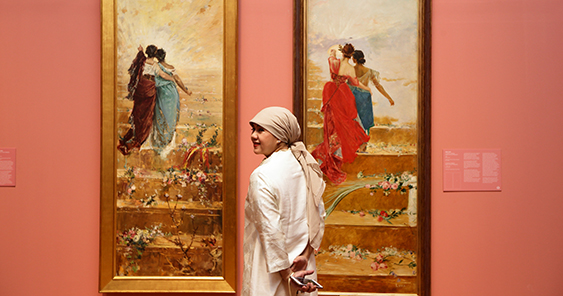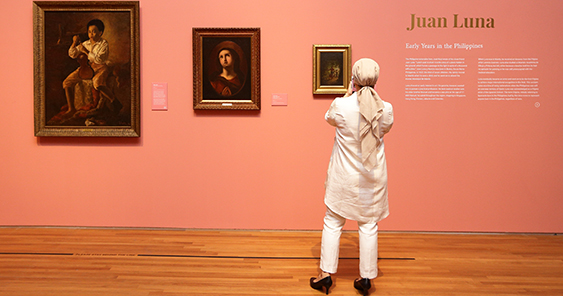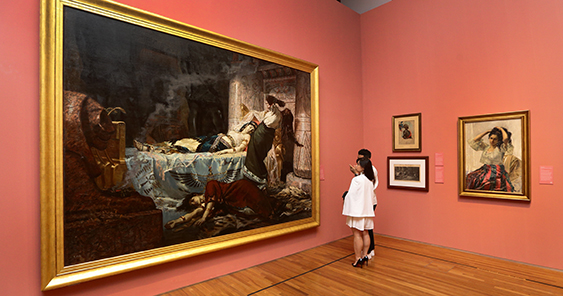Words: Rome Jorge
Interview: Angel Guerrero
In the 19th century, much of the world was under Western colonial oppression. Millions were considered subhuman, inferior, and unfit to even govern themselves. It was the “white man’s burden” to christianise and conquer the brown-skinned “heathens” they subjugated. While the United States practised legalised racial discrimination and segregation after having fought a bloody civil war over slavery, the empires of Spain, Netherlands, Britain, France, and other European oppressors systematically flogged, garrotted, guillotined, shot, mutilated, and amputated thousands for opposing colonial rule or even for just failing to meet quotas of forced labor as their land and natural resources were all stolen from them. It was a terrible time for anyone who was not born a European or one of the privileged families of their local collaborators to whom colonisers outsourced oppression and in return rewarded with haciendas and other forms of largesse.

Even the standards of art, beauty, and civilised behaviour were those of colonial rulers—a foreign imposition to be adopted whilst rejecting one’s own native artistic traditions, heritage, and culture. One had to speak, write, dance, and paint like a white man.
Into this world was born two of the greatest 19th century artists of Southeast Asia: Juan Luna from the Philippines—then under Spanish subjugation—and Raden Saleh from Indonesia—then under Dutch colonial rule. The National Gallery Singapore explores the parallelisms and the peculiarities of these two masters with its groundbreaking exhibit titled ‘Between Worlds’ that juxtaposes their artworks for the first time. The exhibition is part of Century of Light, wherein the complementary exhibition ‘Colours of Impressionism: Masterpieces from the Musée d’Orsay’ showcases Impressionists masterpieces from Claude Monet, Auguste Renoir, and Paul Cézanne—European contemporaries of both Juan Luna and Raden Saleh.
On display in Singapore are masterpieces by Luna such as Cleopatra, Les Ignorés (The Unknown Ones), España y Filipinas (Spain and the Philippines), and Nena y Tinita (Nene and Tinita), as well as two landscape paintings of Java by Saleh from the collection of the Smithsonian and the Arab Horseman Attacked by a Lion.

Tellingly, while European contemporaries such as Monet, Renoir, and Cézanne could afford to rebel against the academist establishment and experiment with Impressionism—the portrayal ephemeral moments with fleeting plays of light—Luna and Saleh both had to prove themselves equal and even superior to their European mentors and contemporaries by painting with the academies establishment’s classicist techniques, themes, allegories, subjects, and scenes. Even when painting scenes back in their native Philippines and Indonesia, their paintings seem to portray scenes in Europe, with overcast skies alien to the sunlit tropics and stylised dramatic friezes that have little to do with realities of colonial oppression. To beat them at their own game, both Luna and Saleh played by their colonial oppressors’ rules and won both respect and acclaim for themselves and their people.

Both Luna and Saleh studied in Europe and gained acclaim. In an exclusive guided tour for adobo magazine publisher Angel Guerrero, the National Gallery Singapore revealed, “We pulled some works from the Philippines’ national hero, Jose Rizal, who’s a close friend of Luna and actually wrote a biography of Luna in 1886. Luna was born in 1857, from childhood he showed early interest in art but of course, his parents like many parents of today wanted him to take on a practical profession, so he actually went to nautical school and this wasn’t approved by his parents either. Of course, his parents would worry undertaking such a dangerous profession going out into the seas at that time. He would be quoted later on as saying that going to nautical school was actually a trick he intended for his parents to accustom them to the idea of separation. He always had this goal of going to Europe to study painting. His elder brother Manuel went to nautical school with him and they were sailing together. Rizal also wrote this very beautiful thing about it because Manuel, he was a violinist – and then when the ship would dock in Manila, Luna would take art lessons. The Philippines had a formal art school at the time but he was only there briefly, and then there are two versions as to why he was there. Luna’s own version was that he was busy with nautical studies, that’s why he had to stop. Before Spolarium, he won a second class medal at Spain’s National exhibition in 1881 for Cleopatra. It was for this painting that he started to get this recognition. By this time, in the 19th century, we know that there was a changing idea in what Filipino’s ideas, also shows the nationalism that was happening in the 19th century as well the propaganda movement and reforms,” said the exhibit’s curator, Clarissa Chikiamco.








